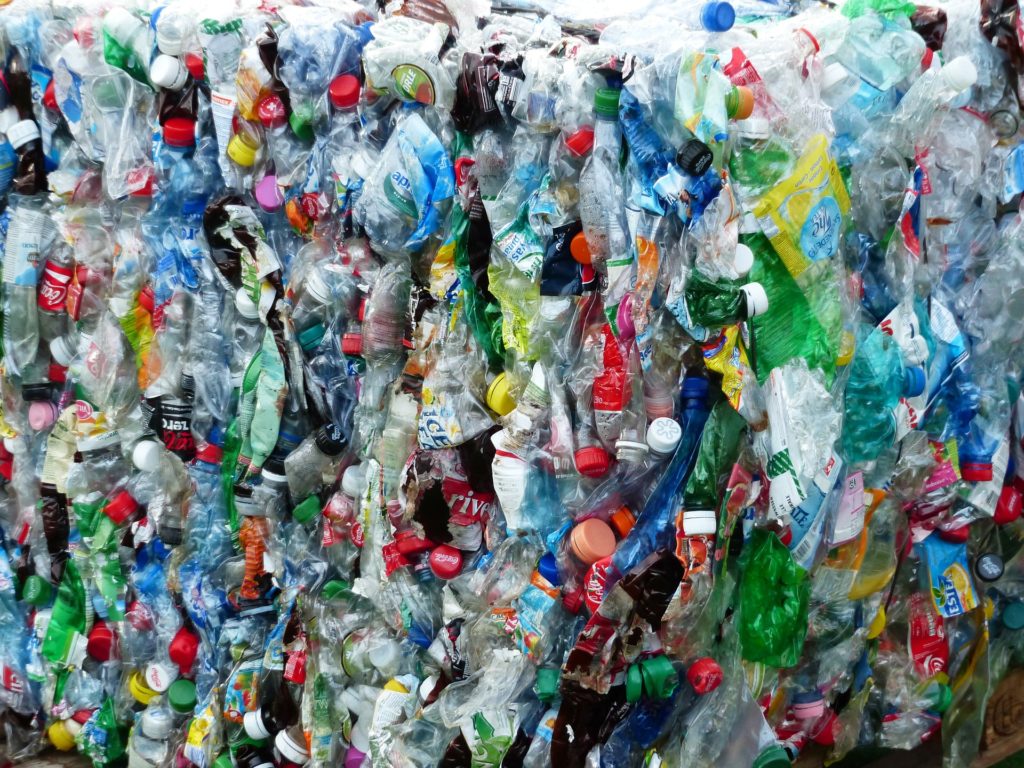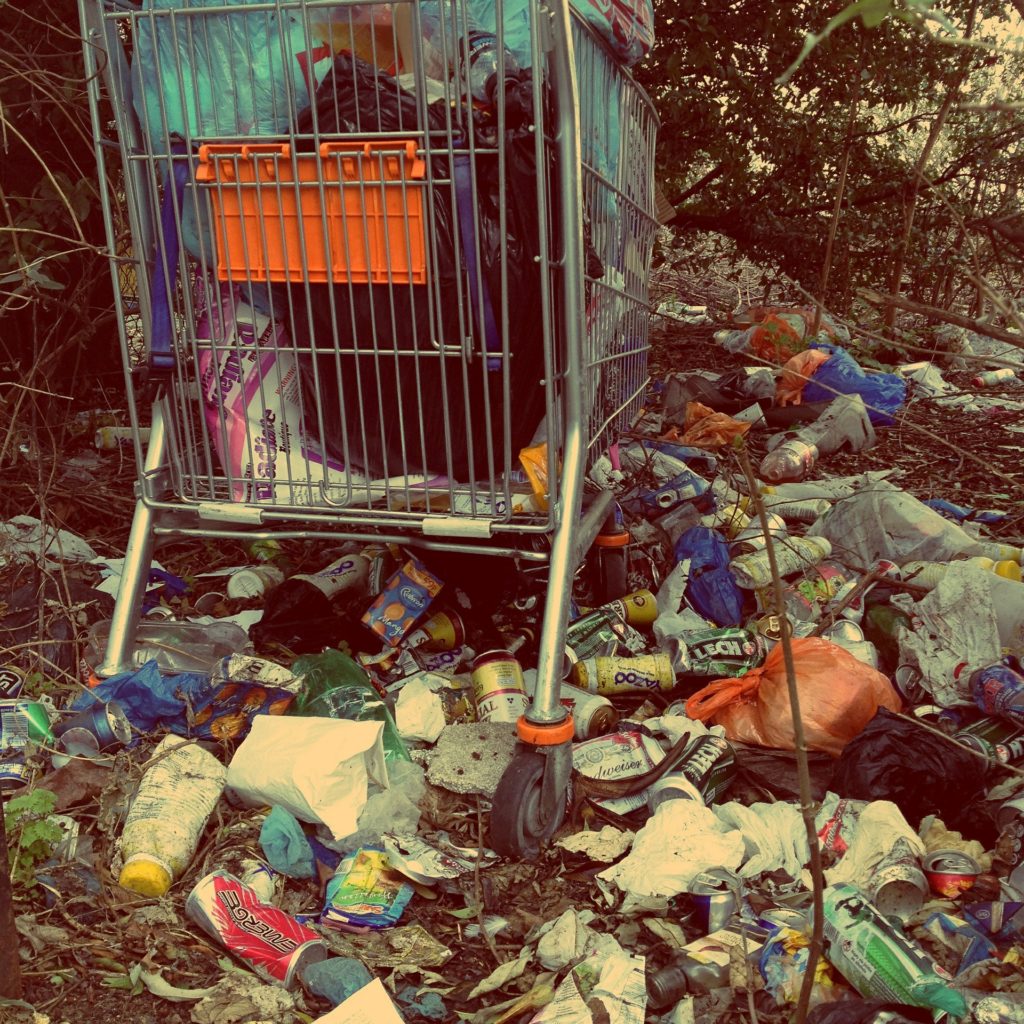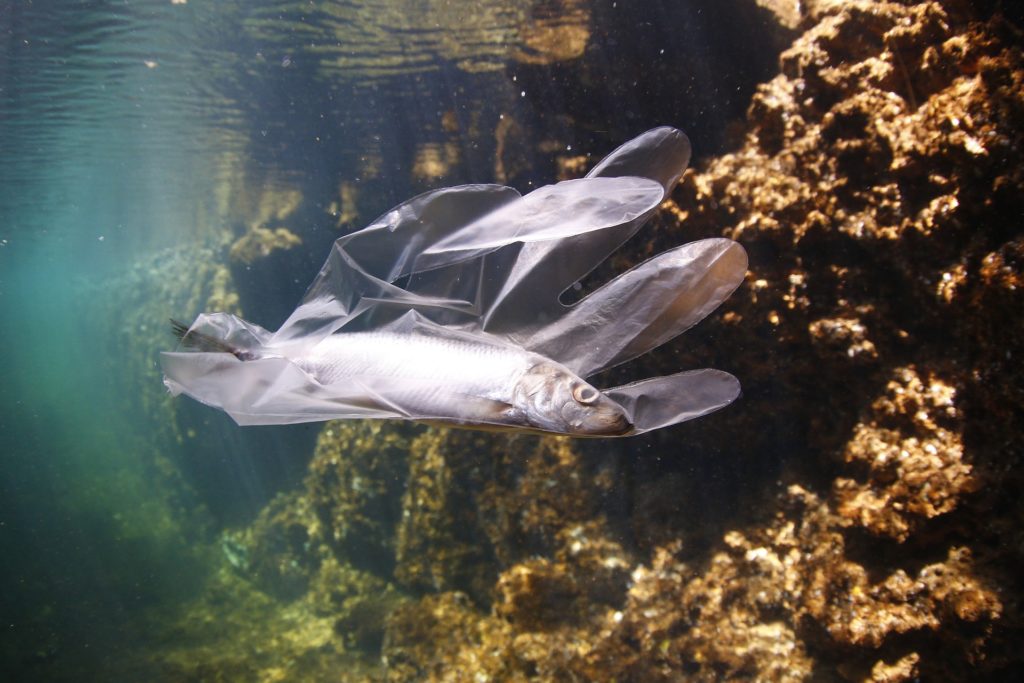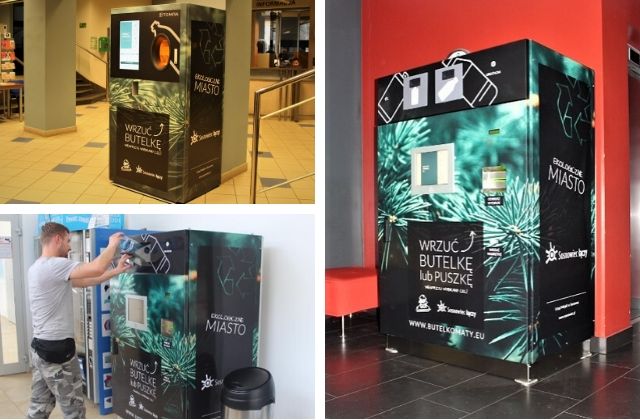We created plastic because we needed it. Unfortunately, we started to misuse it and produce frightening quantities, which create a huge burden for nature. Our planet is flooded with plastic waste because people behave recklessly. Can we turn this flood around?
Plastic is primarily a valuable raw material, rather than rubbish. He should not land at a landfill, in a waste incinerator, not to mention the forest or the sea! It is not a reasonable idea to ban the manufacture of plastic products or packaging. Sometimes the use of plastic can prove to be a more ecological solution than other materials, for example, due to its low weight and a possibility of fast processing. We need to learn again how to use plastics wisely – reduce their production, use them multiple times and increase the efficiency of segregation and recycling in order to strive to close the cycle.

The story of one plastic bag
The creator of plastic bags, a Swedish engineer, Sten Gustaf Thulina, who developed it in 1959, did not suspect that such quantities would be produced and put into use. He assumed that they would be used multiple times and he himself carried a folded bag in his pocket until it was worn out. The plastic shopping nets were created and introduced as an ecological solution to reduce the logging of trees from which non-durable paper bags were produced. And it is not the same thing that happened to them..
In 2019, the ban on free distribution of plastic bags, the use of which was enormous in Poland, came into force – a statistical Pole used as many as 250-300 plastic bags per year. Germans used much less – 60 on average, and Danes – only 4 plastic bags. Unfortunately, Denmark has been at the forefront of waste production per capita for years, so it is better not to take it as an example in other activities.
How much plastic exists? Namely, the untapped potential
Plastics production has grown rapidly over the last few decades, from 1.5 million tonnes in 1950 to 322 million tonnes in 2015 worldwide. Since the 1950s, the total of 8.3 billion tonnes of plastic products have been produced worldwide. Out of this, we have already thrown 6.3 billion tons. Only 9% were recycled. While production of plastic products in Europe is at a similar level in the 21st century, it is still growing rapidly in other countries. Parallel to it, the amount of plastic waste is also growing. Why are we still unable to handle this?

Currently, the level of utilisation of plastics in production amounts to:
40% packages
22% consumer goods and household goods
20% construction
9% cars
6% electrical and electronic equipment
3% agriculture
The biggest problem is the use of SUP, i.e. Single Use Plastic, especially where it can be replaced by a biodegradable solution or just an effort can be made to use dishes and reusable packaging. From 2021, the SUP shall be completely banned in the European Union. It has been precisely stated that the following products can no longer be manufactured: hygienic sticks, plastic forks, knives, spoons, plates, straws, drink mixers, balloon sticks, food containers and polystyrene cups.
What happens to plastics?
The statistics show that the largest amount of plastics is used to produce packaging that has a very short life span. I would like us to use the remaining 60% for as long as possible in order to process it properly after consumption. Unfortunately, the data leave no illusions. Only about 30% of plastic products are recycled, 39% are incinerated and 31% are landfilled… but where? Both plastics intended for recycling and for land filling were partially exported by highly developed countries to Asia. This practice has already been reduced but the infamous impression remains. Our shampoo bottles may still drift in the Pacific!
Drowned in waste
Plastic represents 70% of the contaminants of the seas and oceans. We are shocked by reports of “drifting islands” consisting of plastic rubbish formed by sea currents (one of them is reportedly 5 times larger than Poland). Every year, 8 million tonnes of plastic are deposited in the sea, which also goes to the bottom. It is indeed a very unpleasant sight, and the consequences are deadly for the creatures living there. The cruel suffering and ultimately death of animals is also caused by small plastic particles confused with food. Turtles eat plastic bags, believing that it is jellyfish, fish and birds swallow pieces of plastic that get stuck in their digestive tract. We do not even realize that this may contribute to the extinction of entire populations and even species!

Recycling halfway
Throwing plastic packaging into a yellow bag is not enough. We must be aware that only about 30% of the raw materials accumulated there will be recycled, thus we should change our purchasing behaviour. Let’s not buy products in multi-material packaging, e.g. liquid products in cartons or PET bottles with heat-shrinkable film. If it happens to us, let’s try to separate them from each other. Let’s unscrew the nuts before throwing them into the right container. Let’s make it easier to sort and recover the really valuable raw material. Companies that process waste have a difficult business environment anyway, since they struggle to maintain profitability. The conditions are still determined by the economic, rather than ethical approach, while the fall in prices of oil from which the primary plastic is produced has made the regranulate too expensive. This is another paradox that amazes me.
Segregation can even be organised on the basis of upcycling. How do you like it?
Manufacturers of packaging under scrutiny
In order to make recycling more effective, a wide range of measures must be taken. The system should be based on the cooperation of all parties in the process: manufacturers, packaging designers and manufacturers, consumers, local authorities responsible for waste collection, recyclers and legislators. Recycling must become more cost-effective – regulations must be introduced so that manufacturers cannot introduce packaging which cannot be recycled and are obliged to use recovered materials. A system of reliefs and taxes would be very helpful here, however, the extended responsibility of the packaging producer should not only be financial but also operational so that no abuse occurs. No one will believe in fictitious declarations existing on paper anymore, which we have experienced so far. In addition, packaging must be used repeatedly. It’s high time for a real deposit system for glass bottles but also for valuable PETs to acquire them directly. It is the most efficient raw material. We are still at the beginning of our way to a closed-circle economy. We have a lot to do here.
Repair errors in circulation
In Poland, where waste management is the responsibility of the local government, we often encounter wasting of raw materials. One should remember that plastic, glass and paper is not rubbish, but valuable materials to be recovered. They should not be discharged to a waste incinerator or a landfill. At present, in Poland we recycle about 100 thousand tons of PET bottles from more than 200 thousand tons produced. Why? The reason for this is a circulation error. If a municipality has built an incinerator, more waste goes directly there instead of the sorting plant. Such an environmentally harmful policy should be abandoned! A wave of scandals related to apparent litter reduction passes across Europe. The way statistics are communicated contributes to falsifying the real state. What if, for example, Sweden meets European requirements and 40% of waste is recovered as raw materials? Only 20% of these are recyclable and the remaining 80% go to the incinerator. A statistical Swede produces more rubbish than a Pole, so in quantitative terms it degrades the environment more. We are all looking for new solutions, so it is worth looking around and check what works and why.
Throw a bottle
Automatic collection machines for plastic bottles, glass bottles and cans seem to be a simple and accurate solution. Are we ready for that? In 2019, two recycling automated machines were placed in Warsaw, which received raw materials in exchange for points charged in the application. They could be exchanged for prizes. Already on the first day one of them was devastated, however, it did not kill the project. Currently, 10 automated machines operate in Warsaw and further implementation is planned in other Polish cities. The Cracow bottle machine deployed in the city hall also scored a false start. It did not survive much interest, mainly from the homeless, who were motivated by the amount of 10 grosz obtained for each bottle of PET. The bottle machine was supposed to be moved to a different place but it has disappeared. The cash exchange model was a failure. Sosnowiec found another solution. 8 vending machines accepting PET bottles (3 of them also cans) were deployed at public facilities in exchange for the possibility of supporting a certain amount of local sports clubs. The system works, functions and operators are satisfied with the results of the project. Such initiatives are welcome but we urgently need more systemic solutions.

Norway closes the plastic cycle
A deposit for a plastic bottle? A deposit for an aluminium can? That should not be surprising to anyone. Such fees have been successfully operating for 30 years in Norway. All points that sell beverages (approx. 15,000) accept packaging either manually or through 3,700 vending machines. In 2019, more than 89% of PET bottles were recovered in this way and as much as 95% of them were recycled. This form of collection ensures the purity and very good quality of the raw material obtained. Such result is also possible thanks to the standard for the design and implementation of PE bottles for beverages which has been in force since 1999. The unification of parameters significantly facilitates recycling and reduces sorting costs. It also allows for exemption from recycling tax for entities introducing packaging recovered in the system at a level of 95%. It is estimated that as a result of this practice some batches of plastics have been already recycled 50 times. In 2020, Norway plans to close the raw material cycle completely. Indeed, they are very close to 100%. Is it possible? It is! What about the other plastic packaging?
I have written about other waste treatment solutions giving examples of Oslo and Copenhagen.
Plastics can be good if we stop using them inappropriately.
Plastic in many cases allows us to protect the environment. If we decide to eliminate it completely and replace even some of the packaging with paper or raw materials made from other plants, we will have to clear huge areas of forest. Plastics enable better protection and storage of food, reducing food waste. The problem begins when we use them carelessly and discharge them improperly. Wherever you can use packaging, containers, reusable equipment – let’s make an effort and use them. Many food products and even cleaning products can be bought by weight into own containers. If we do not have access to such shops, let’s choose the largest and simplest packaging possible, preferably made from waste. Let’s segregate raw materials accordingly, not to mention throwing out litter. It is the least we can do in anticipation of decisive action by the authorities to create appropriate legislation and then by the local authorities and entrepreneurs who will implement it. After all, all of this will pay off!
Raw material, instead of junk!
We have learned to process raw materials in different ways. Sometimes these are brilliant solutions. New ways to treat waste as efficiently as possible are still developed. No one is surprised anymore that new plastic bags, barrels or pipes, even car parts and even clothes can be made from regranulate. Approximately 20 PET bottles are enough for a new fleece, sports shirt or leggings, and only 6 for shoes. From recycled waste we produce toothbrushes, original Bluetooth wireless speakers, designer chairs or felt which has many uses – from bags to decorative wall panels. Recycled plastic is also widely used in the construction industry – it is used to make thermal insulation boards, ecoplates used in sports facilities, elements of playgrounds, window frames or acoustic screens. Additional possibilities are open for us owing to the 3D printing technology. Another excellent solution is upcycling, i.e. giving objects a new character and function, without industrial processing, using your own fantasy and creativity.


What about you? Have you seen any ingenious and useful use of plastics? Share the information, let’s inspire each other!










